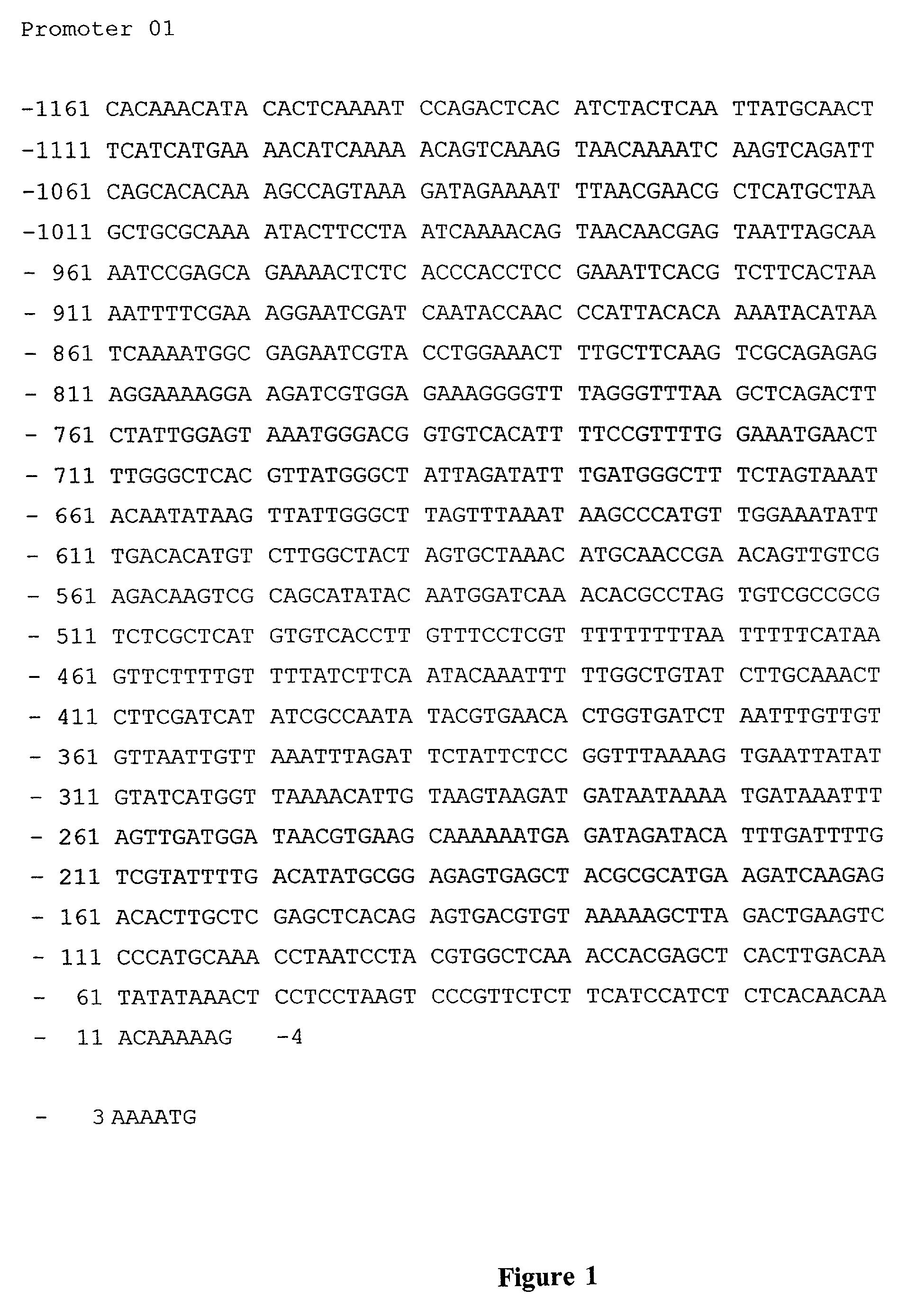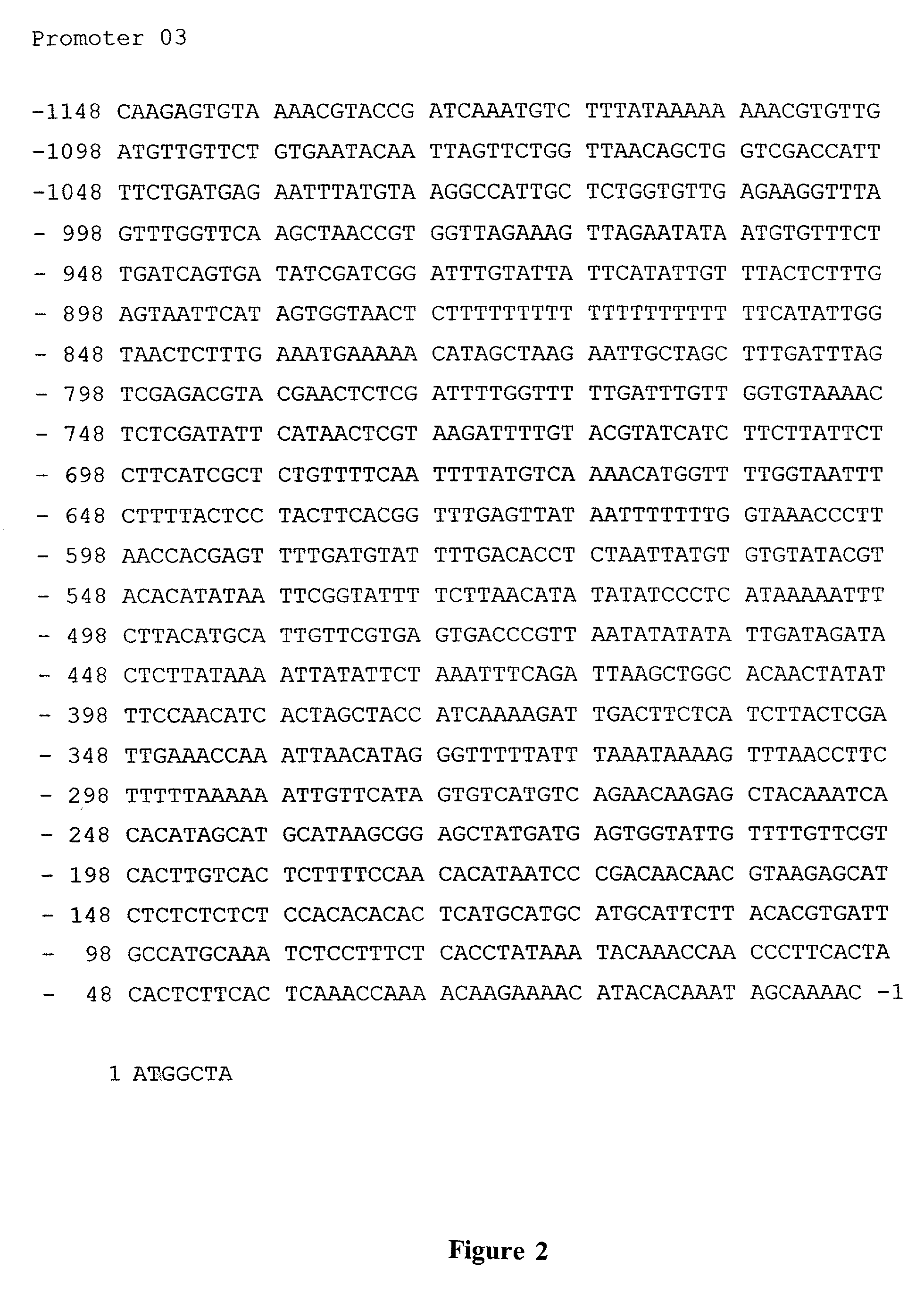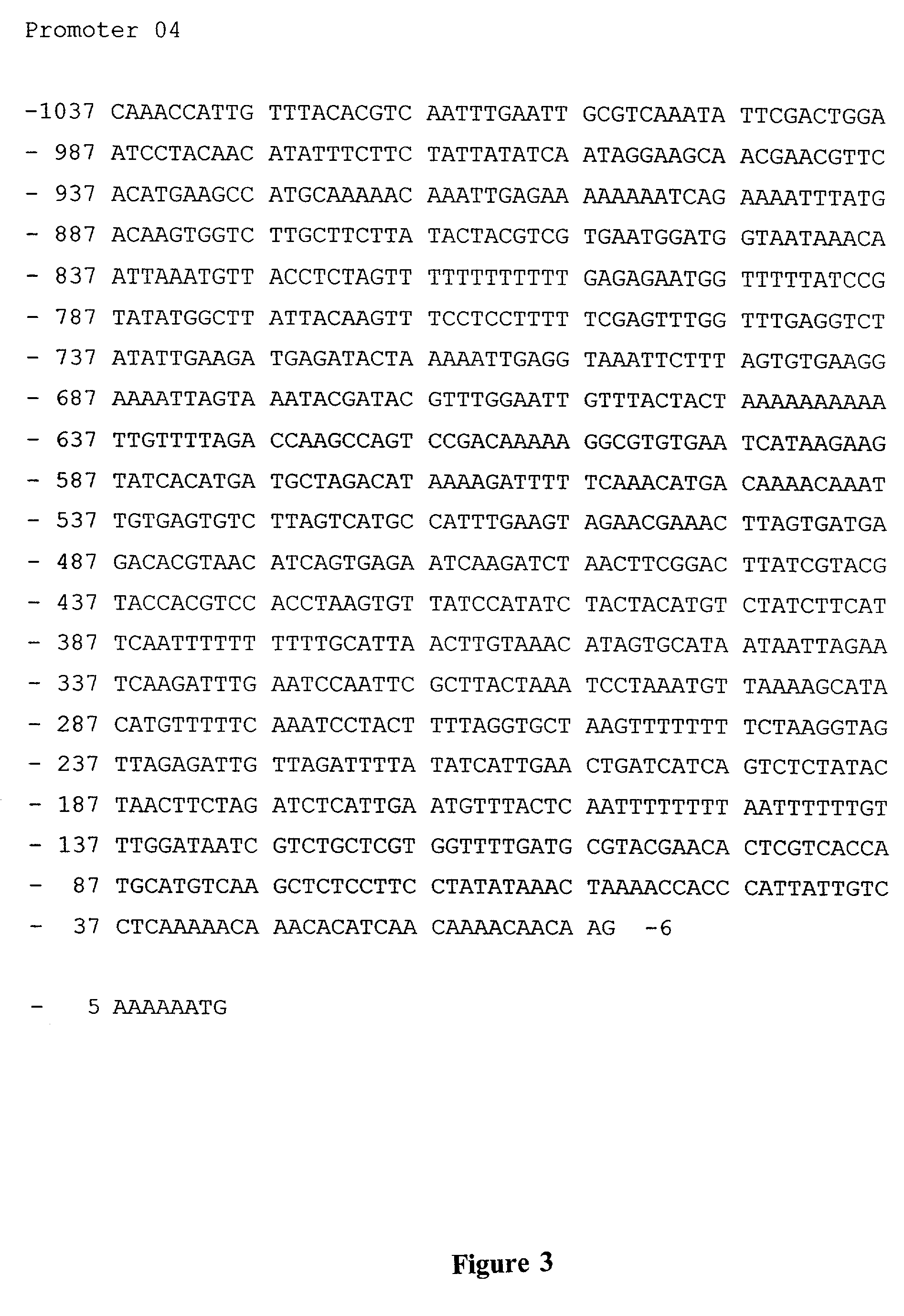Plant seed specific promoters
a technology of promoters and seeds, applied in the field of seed specific promoter regions, can solve the problems of slow modification of genetic information by naturally occurring mutations, undesirable traits arising, and recombining genetic information
- Summary
- Abstract
- Description
- Claims
- Application Information
AI Technical Summary
Benefits of technology
Problems solved by technology
Method used
Image
Examples
example 1
Developing Seed EST Isolation and Analysis
A. Library Preparation and Screening
[0232]To construct the Arabidopsis developing seed cDNA library, immature seeds of Arabidopsis thaliana ecotyope Col-2 were collected 5–13 days after flowering (DAF). RNA was extracted according to Hall et al. (Hall et al., Proc. Natl. Acad. Sci. U.S.A, 75:3196–3200 (1978)) from 1 g of seed tissue and a directional cDNA library was commercially prepared from polyA+ mRNA in the lambda ZAP II vector (Stratagene, La Jolla, Calif.) using oligo-(dT) as primer for cDNA synthesis. The primary library was amplified once to yield an initial titre of 1.9×1010 pfu / ml and was used for all subsequent experiments. Based on 48 randomly selected clones the average insert size was estimated to be 1.9 kb, as determined by gel electrophoresis of PCR amplified inserts. Following the excision of phagemids according to the manufacturers instructions, bacterial colonies were arrayed onto nylon membranes at a density of 36 clones...
example 2
Microarray Analysis of ESTs from Developing Seeds
A. Amplification of cDNAs
[0237]The plasmids of 2715 selected cDNA clones were collected from data set I. The inserts of the cDNAs were amplified by PCR in a 96-well format using primer pairs specific for the vector ends (for inserts in pBluescript SK-: T7, 5″-GTAATACGACTCACTATAGGGC (SEQ ID NO: 55), and 5″ extended M13 reverse, 5″-ACAGGAAACAGCTATGACCATG (SEQ 113 NO: 56); for inserts in pZipLoxl: M13 forward, 5″-CCCAGTCACGACGTTGTAAAACG (SEQ ID NO: 57) and M13 reverse, 5″-AGCGGATAACAATTTCACACAGG) (SEQ ID NO: 58). PCR reactions of 100 gL volume contained 0.4 gM of each primer, 0.2 gM of each desoxynucleotide, 10 mM Tris, 50 mM KCl, 3.0 mM MgCl2, 3 U Taq DNA polymerase (Promega, Madison) and −10 ng plasmid template. The reactions were run on
[0238]This invention was made in part during work partially supported by the United States National Science Foundation grant no. DCB94-06466. The United States government may have certain rights in the ...
example 3
Identification, Isolation and Characterization of Seed-specific Promoter Regions
A. Materials
[0247]Genomic DNA which was used for PCR amplification was extracted from Arabidopsis leaves using the CTAB method (for example, as described by Stewart et al., Biotechniques: 14(5):748–50 (1993).
B. Data and Sequences Analysis
[0248]Individual EST sequences were compared using BLAST against Arabidopsis genomic sequences larger than 10 Kb using the TAIR server manually. After the positions of these EST sequences in the genome were determined, approximately 20 Kb flanking sequences of 30 genes were analyzed by Gene Identification Programs such as GenScan, GeneFinder and NetStart to determine the positions of ATG translation starts. The promoter regions were defined as those regions approximately 1 Kb upstream of ATG; these regions were then selected for PCR amplification.
C. Molecular Cloning and Vector Construction
[0249]To construct a GUS expression vector with promoter regions of the present in...
PUM
| Property | Measurement | Unit |
|---|---|---|
| pH | aaaaa | aaaaa |
| size | aaaaa | aaaaa |
| energy | aaaaa | aaaaa |
Abstract
Description
Claims
Application Information
 Login to View More
Login to View More - R&D
- Intellectual Property
- Life Sciences
- Materials
- Tech Scout
- Unparalleled Data Quality
- Higher Quality Content
- 60% Fewer Hallucinations
Browse by: Latest US Patents, China's latest patents, Technical Efficacy Thesaurus, Application Domain, Technology Topic, Popular Technical Reports.
© 2025 PatSnap. All rights reserved.Legal|Privacy policy|Modern Slavery Act Transparency Statement|Sitemap|About US| Contact US: help@patsnap.com



